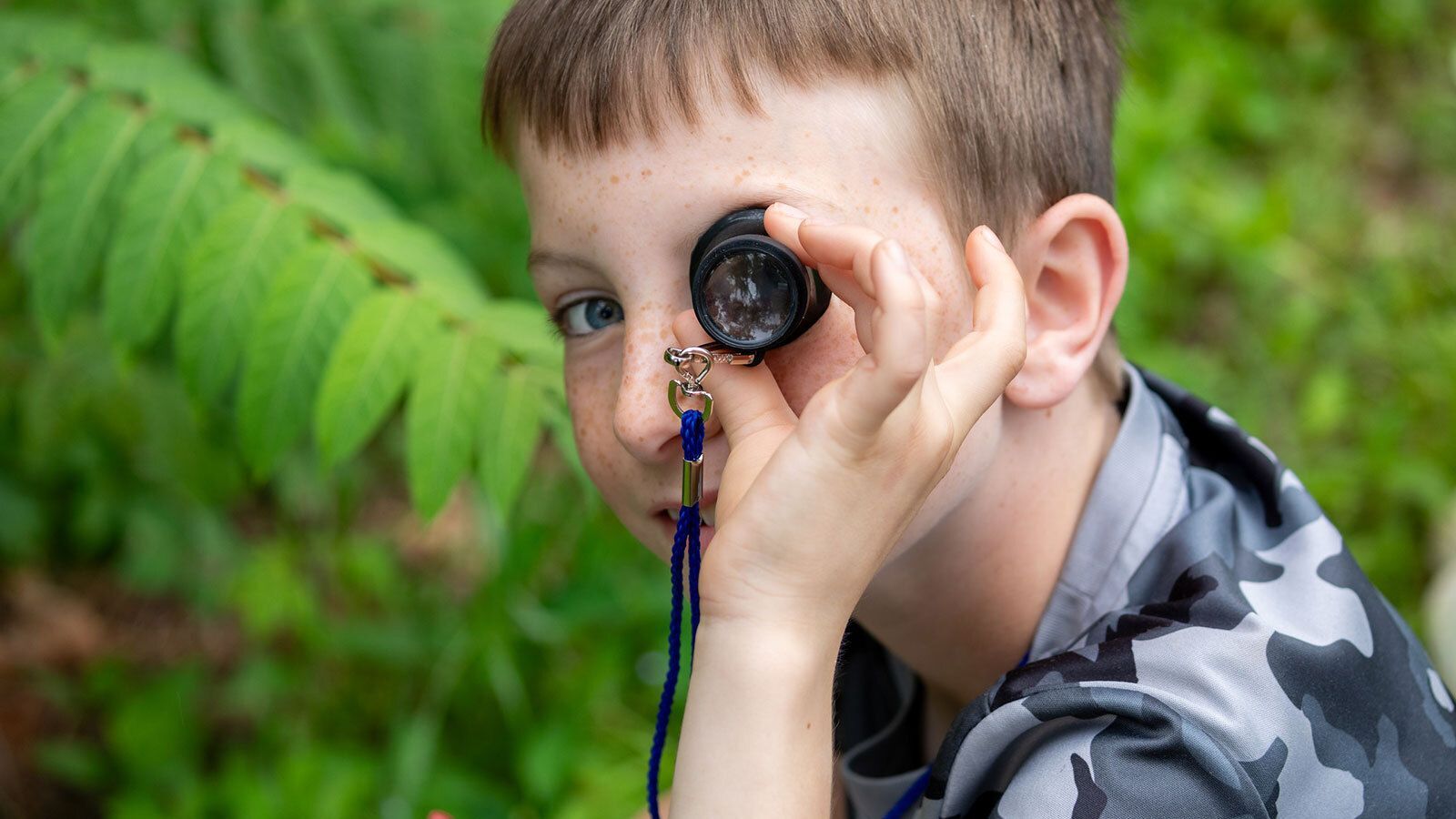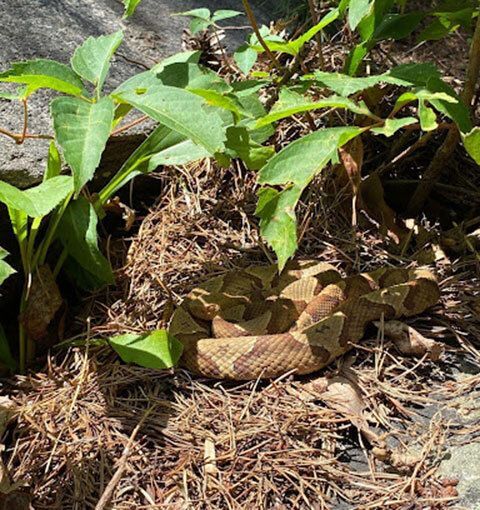The image above is a copperhead snapped by one of our team members during one of her hikes at Chimney Rock State Park in western North Carolina. Blink twice, because you could miss this special snake blending into its surroundings!
Copperhead snakes are just one of about 40 species of snakes found in North Carolina, and one of the only venomous snakes in our state. They can be identified by their golden brown or "copper" color with dark brown patterns along their sides that resemble hershey kisses.
Snakes are often misunderstood creatures, but they are truly fascinating once you get to know them! Let's explore the snakes of North Carolina and learn why they play such an important role in the ecosystem.
Fun facts about snakes:
- Snakes don’t have legs! Even though they don’t have legs, snakes are excellent at moving. They use muscles along their bodies to slither and can travel quickly across the ground. Most can even climb trees! Snakes are quite strong when it comes to using their muscles to constrict their prey.
- Snakes shed their skin as they grow. This is called molting. Most snakes molt 4-12 times a year when they are growing, and periodically shed as adults to help them heal from injuries and get rid of external parasites. They don’t grow bigger with each shed; instead, they grow over time as their old skin gets stretched out and replaced with a fresh layer.
- Snakes have no eyelids. Who knew?! Unlike humans, snakes don’t have eyelids to blink. Instead, they have a special scale that covers their eyes to protect them.
- Snakes can “taste” the air. Snakes have a special organ in the roof of their mouths called the Jacobsen’s organ. They stick their tongues out to pick up tiny scent particles in the air, helping them "taste" what’s around them. This helps them find food and avoid danger.
- Snakes don't like to bite! Despite what you might think, it takes a great deal of energy for snakes to bite down and release venom. For this reason, snakes only care to bite something if it is small enough for them to eat. However, snakes use their teeth as their first line of defense against danger and to capture their prey. There is even a special enzyme in snake saliva that causes excessive bleeding.
Common nonvenomous snakes of North Carolina
Common venomous snakes of North Carolina
Why are snakes important?
Snakes are expert hunters that do a great job of keeping rodent, insect, and tick populations down.
They also supply food for a variety of animals including owls, hawks, opossums, skunks, and raccoons. If we didn't have snakes, some of our favorite animals wouldn't have anything to snack on!
What do you do if you see a snake?
Leave them alone. Most of the time if you spot a snake outdoors, you can observe it from a distance with amazement and let it slither away. However, if you end up being too close to a snake, remember to stay calm, back away slowly, and give the snake plenty of space.
Remember, snakes don't like to bite! They won't chase you and will only bite if they feel threatened.
How can we help snakes?
Snakes are a classic underdog species, so the most important thing you can do for them is spread the word about how cool and important they are. Let's help people understand the truth about snakes; they aren't mean, scary animals, and they don't want to hurt you.


